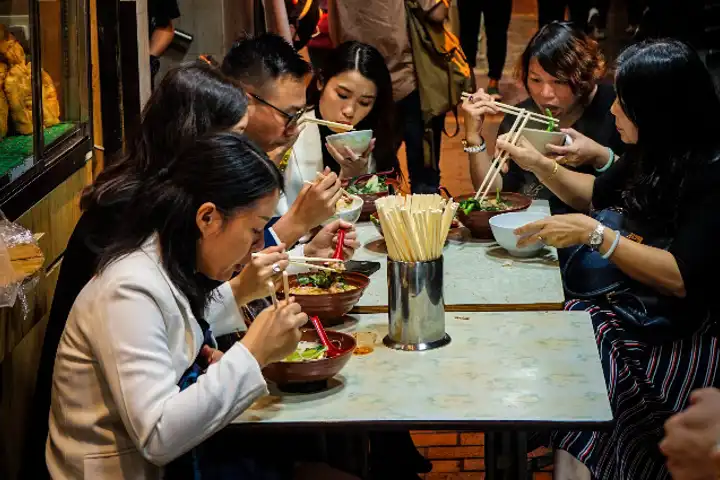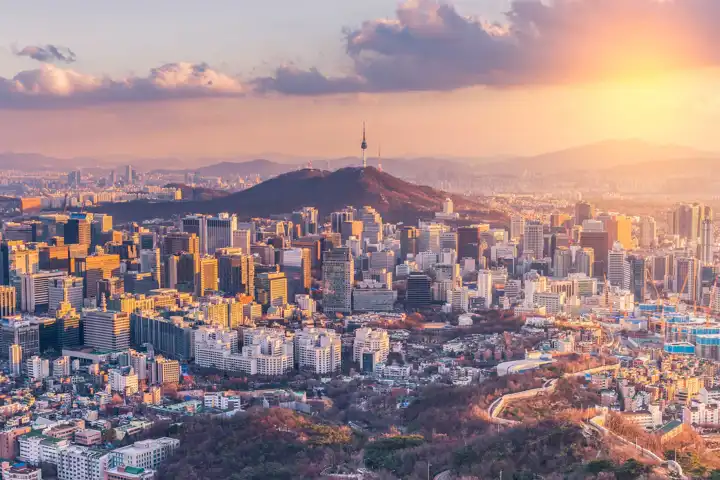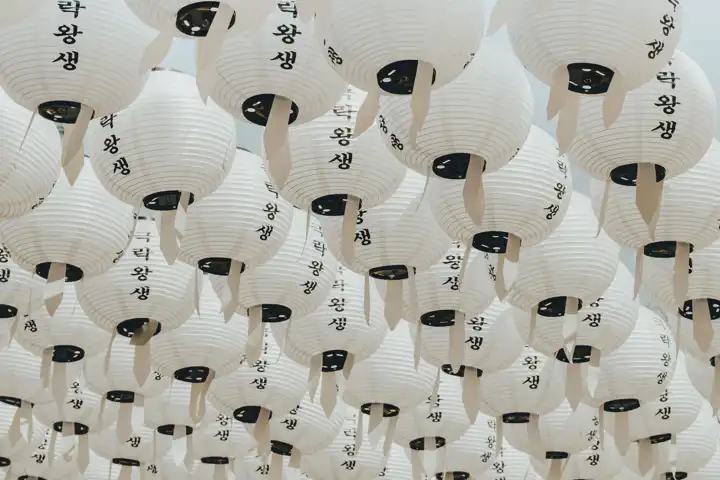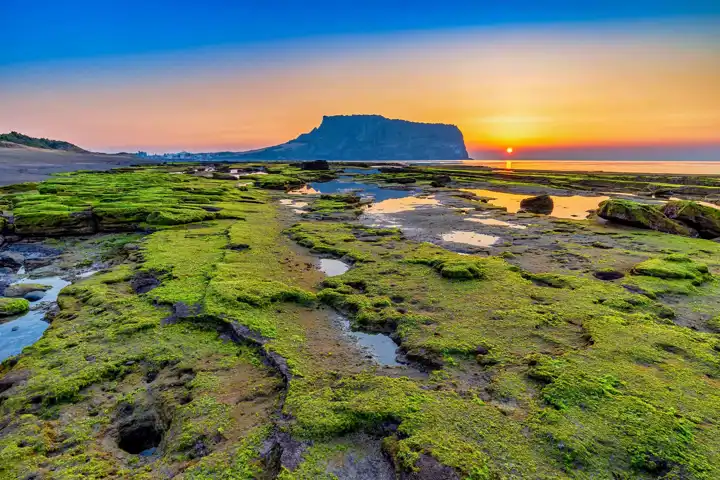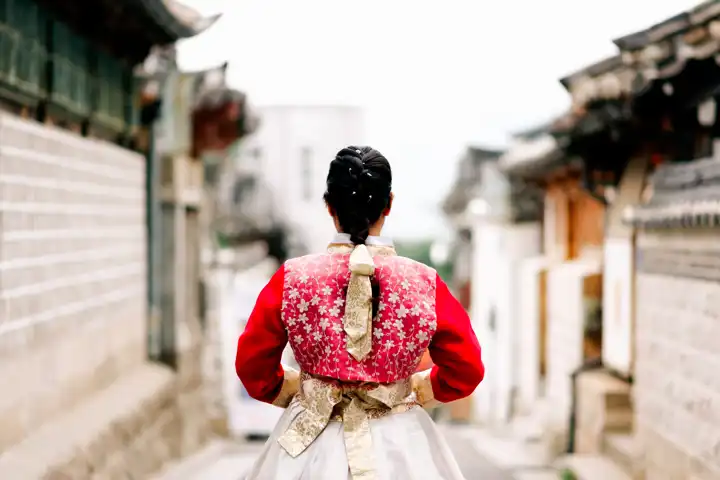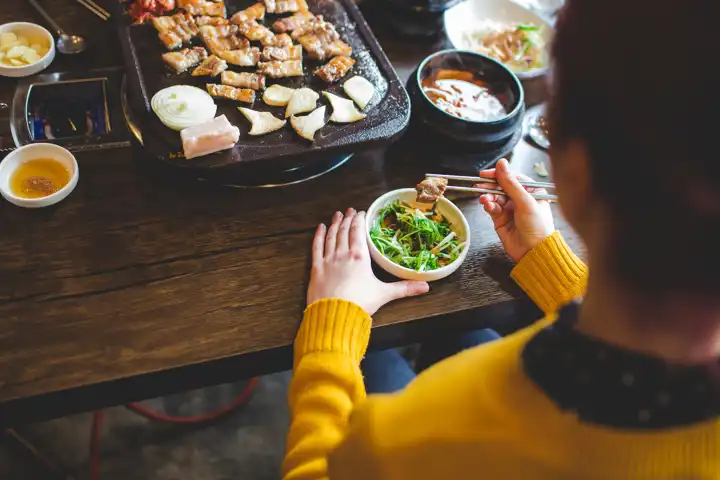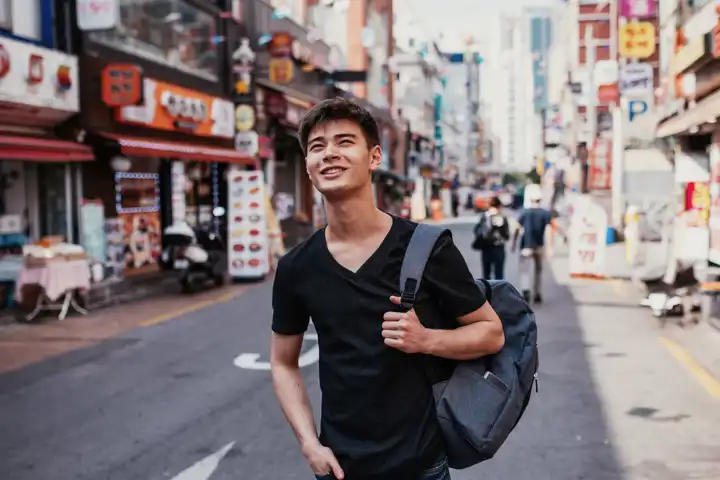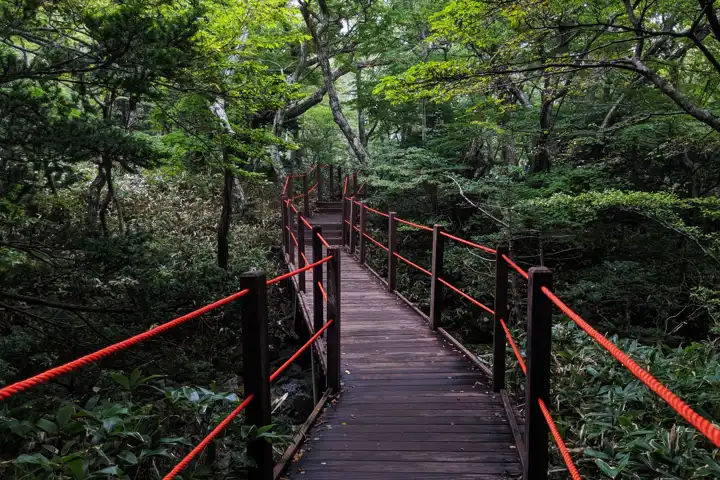South Korea
Discover the Ancient and the Avant Garde
South Korea
South Korea, split from its neighbor to the north, is brimming with history, culture, and kimchi (fermented cabbage), which Koreans enthusiastically share with visitors. Its flag, yin and yang symbols on a white backdrop, is symbolic of the values of peace, purity, balance, and harmony.
Savor Seoul
The bustling capital Seoul is a high-energy city of skyscrapers and shiny lights. When the day turns to night, roam the crammed lanes of the Namdaemun Market—the country’s oldest, dating to the 1400s—for pretty much everything imaginable.
Street eats in Seoul are plenteous. Feed your hunger with dakochi (grilled chicken skewers) and rice cakes. Indeed, the food is reason enough to make the trip to South Korea. Most meals center around rice, served with a bowl of piping hot soup and a smorgasboard of meat and vegetable dishes. Instead of frying, many of the meals are soaked in brine making them more nutritious and flavorful. On a warm day, cool off as the locals do with an omija, sweet magnolia berry tea.
Revered Traditions
Even though Seoul is speeding forward, remnants of its spectacular past are everywhere. The 1395 Gyeongbokgung Palace, a sprawling compound of various royal buildings, now houses the National Folk Museum. It’s the largest of the five royal abodes in Seoul. Additionally, one of the most beautiful sides of Seoul is Bukchon, a neighborhood of slanted, narrow streets and restored traditional Korean houses, or hanok.
The past comes to life on festive occasions when the people dress in hanbok, a graceful, colorful outfit with a fitted jacket and long, bell-shaped skirt. See traditional music, song, and dance performed at the Jongmyo Shrine, a UNESCO-listed Confucian royal place of worship dating back to the 16th century.
Beyond the Cities
The South Korea countryside is just as captivating. The coast boasts a beautiful national park with ample plants, birds, and marine life. Tiny villages of thatch- and tile-roof houses called hanoks are tucked into green rice fields backed by lofty mountains. Climb to the top of Bukhansanseong National Park where the towering golden Buddha statue sits near the Guknyeongsa Temple. Some of the country’s most precious religious artifacts, like the 80,000 Buddhist texts engraved on woodblocks in the 13th century, are housed in Haeinsa Temple on the slopes of Mount Gaya. The serene temple is dusted with snow in the winter. Across the country in the spring, fragrant cherry blossom trees add to the feeling of spiritual calm.
Experience Luxury Travel to South Korea
with Ker & Downey
South Korea is a country for travelers seeking both the ancient and the avant garde, and Ker & Downey custom journeys ensure you will discover more than what you might expect. Peruse our collection of sample itineraries, then contact a Ker & Downey travel expert to begin customizing your own journey.

